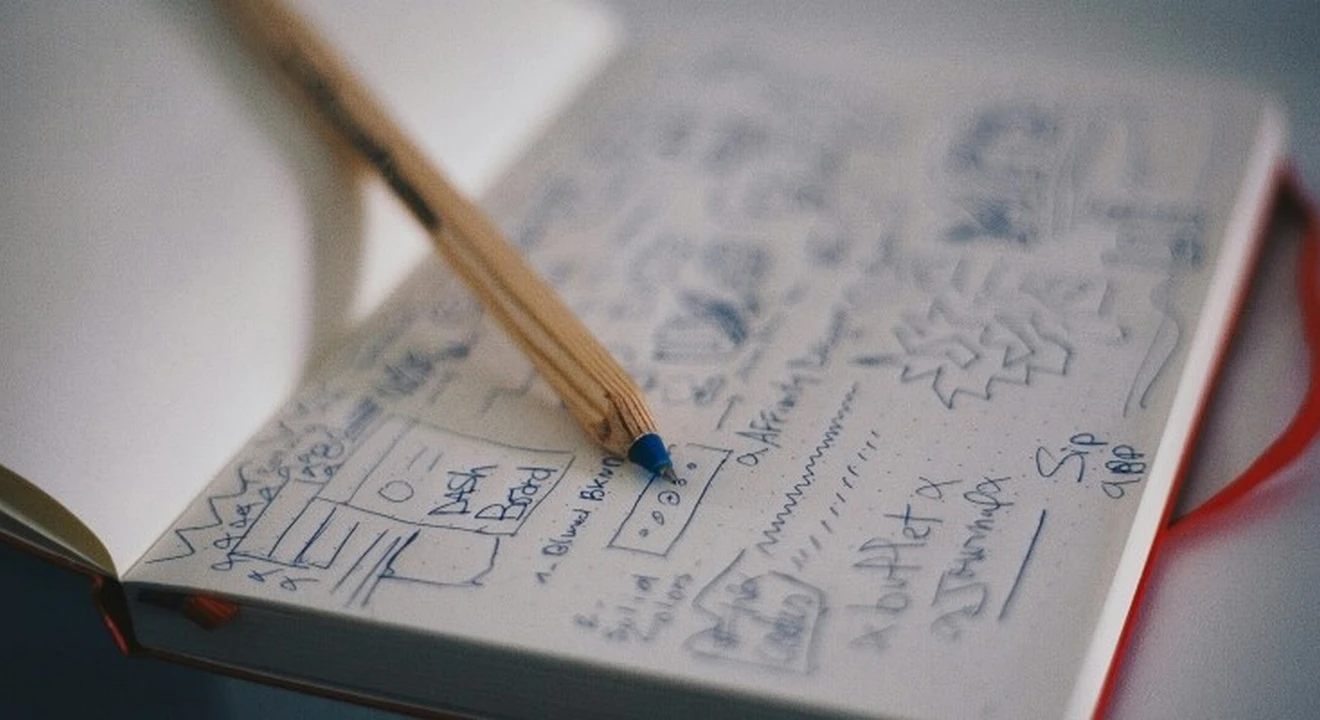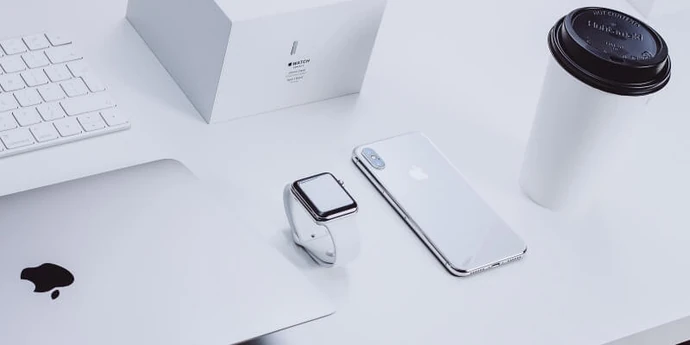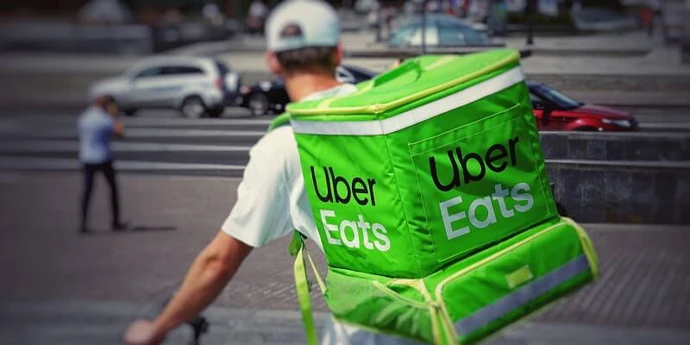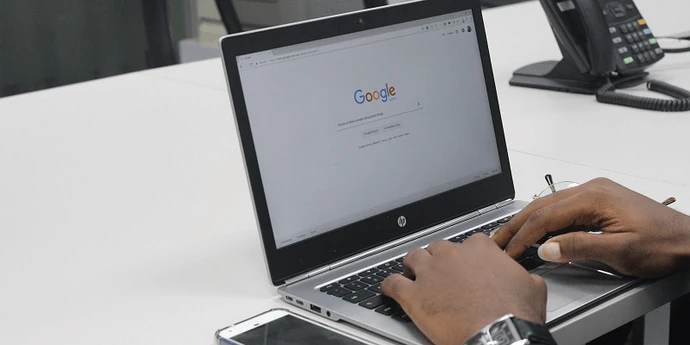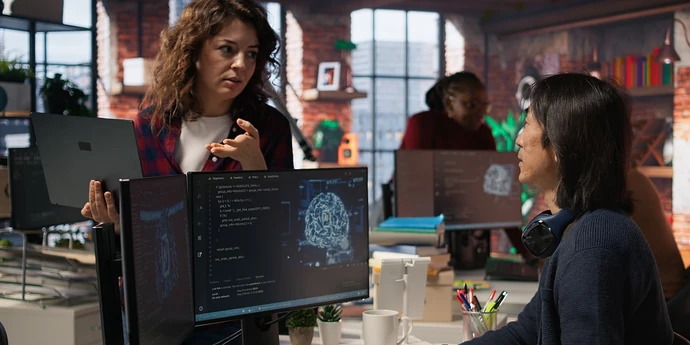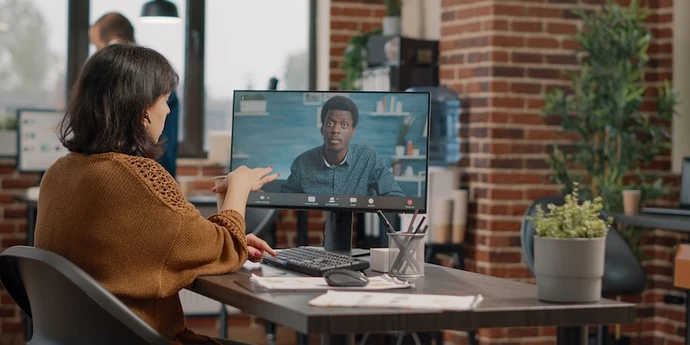Product design questions are common in product manager interviews at companies like Google, Meta, and Amazon. In fact, they made up 13% of the 600+ interview questions that we collected from these three companies.
Questions such as “How would you design a phone for people with hearing loss?” can really stump you if you have not prepared for them.
Worried? Don't be. This guide has everything you need to learn how to answer product design questions confidently and effectively. We'll cover:
- What is a product design question?
- How to answer product design questions
- Example product design question with answer: Design a computer keyboard
- 10 product design interview questions with answer ideas
- More product design questions from top tech companies
- Product design mock interviews
- How to prepare for product design questions
Let’s get started.
Click here to practice 1-on-1 with FAANG ex-interviewers
1. What is a product design question?↑
Product design questions are one of the most common and important types of questions asked in product manager interviews. You’ll often be given 45–60 minutes to design a completely new product, such as “a fitness app for Meta” or “an umbrella for kids.”.
Product design questions are often part of a “product sense” interview round, as it is known at companies such as Meta, Lyft, Stripe, and others (Google has a “product insight” round).
As part of this round, instead of a product design question, you might get a product improvement question (see our separate guide to product improvement questions).
Next, we’ll dive deep into a framework that will help you answer all product design questions, as well as a complete sample answer that uses that framework. If you’d like to skip straight to the list of questions, you can do so here.
2. How to answer product design questions↑
We recommend using a three-step approach to answer product design questions in a product manager interview. This approach is also known as the BUS framework:
- Business objective
- User problems
- Solutions
If you're preparing for a product manager interview, we strongly encourage you to learn that framework, as it can also be used for product improvement questions (e.g. "How would you improve YouTube?"). Let's go through each of the three steps, one by one.

Step one: Business objective
Many candidates skip this step and start listing design ideas in an unstructured way. This is a big red flag for interviewers.
Here are the things you need to do before starting to think about user problems and how to solve them:
- Outline how you will approach your answer.
- Define the business objective.
First, you should lay out your approach to solving the question.
You could say something like, "First, I'm going to try to understand the business situation and our objective in more detail. Second, I will focus on defining the target user and brainstorming what problems we could solve for them. And third, I will generate solutions for these problems, prioritize them, and make a recommendation."
Outlining your answer shows you think clearly and strategically, and that you've got strong communication skills. If you jump straight in and answer the question in an unstructured way, it will be very hard for your interviewer to keep up with you.
Second, you need to clarify the business situation and objectives. Knowing the business context and what it's trying to achieve will help you make better design decisions later on. This is particularly important if the question your interviewer asks is vague.
For instance, let's imagine your interviewer wants you to "design a phone."
Then you might want to ask what the specific business objective is that we are trying to fulfill (e.g., sell as many phones as possible with a low price point, go for the premium market, etc.) and whether we already have a user in mind for the phone (e.g., business users, teenagers, etc.).
You'll design completely different phones depending on the answer to these questions.
“The first step is to use clarifying questions. Ask for more context for why you’re building the product. This also helps constrain your problem: what markets? What timeframe? What platform? Anything you can do to make the problem smaller."
Mark, former Google Senior PM and Meta PM
Step two: User problems
Now that you know more about the business situation and objectives, it's time to think about the users and their problems/pain points in greater detail.
Here are the things you need to do in this step:
- Select a user type.
- List user problems/pain points.
- Prioritize user problems/pain points.
First, you should identify the different types of users for your product, and you should select one to focus on.
Going back to our phone example, if the business objective is to focus on an underserved market, you could suggest focusing on: hard of hearing users, visually impaired users, elderly users, users with mobility issues, etc. List these different users and select one with your interviewer.
Note that you can skip this part of the discussion if your interviewer has already specified a type of user they want to focus on in their initial question.
It's also helpful to remember that for some products, the user and the customer are not the same person. For example, this is the case for games that parents buy for their kids, or software (e.g., Jira) that managers buy for people in their teams.
Second, once you've got a target user, you should think through what problems you can solve for them. An easy way to do this is to imagine them using the existing product or service you're trying to replace.
For instance, let's imagine we are focusing on hard-of-hearing users. What are the problems they are facing with current phones?
Here are some examples:
- Can't hear the phone ringing
- Can't hear the other person talking on the line
- Can't listen to voicemails
- Can't hear app notifications
- Can't hear the sound of videos received from friends, etc.
Third, you should prioritize one to three items from the list of problems you have created. It's common to prioritize based on how painful that problem is for the user.
For instance, you could say something like, "My suggestion is to focus on solving problems one and two because those are the two features that really define a phone and they are currently inaccessible to hard of hearing people."
“You need good pain points to come up with good solutions. Some people just offer one pain point, but it’s probably better to give a few. Organize them based on the level of pain and impact." Mark, former Google Senior PM and Meta PM
Step three: Solutions
Many candidates don't spend enough time selecting a single target user and creating an organized set of solutions. Once you've defined the user problems you are trying to solve, it's time to generate some solutions. Here's how to do it:
- List solutions.
- Prioritize solutions.
- Summarize your answer.
First, for each of the user problems you have identified, you should generate potential solutions.
Let's do this for user problem 1: hard of hearing users can't hear their phone ringing. You could build a phone that does any of the following things when ringing:
- Rings for longer than standard phones to give more time to pick up
- Flashes bright colors on the screen
- Vibrates really strongly
- Is connected to a vibrating wristband or watch
- Sends visual notifications to other connected devices, such as laptops, TVs, connected light bulbs, etc.
At this stage, it's helpful to draw a table with two columns on a piece of paper or on a whiteboard. The first column should contain the user problems you have decided to focus on. The second column should contain solutions to solve each problem.
Second, once you've generated a few ideas, it's time to prioritize the ones you will recommend building. A common way of doing this is to grade each solution from 1 (low) to 3 (high) based on how much value they would deliver for the user and how easy they are to implement.
You will need to do this for each of the user problems that you identified in step 2. Don’t forget to address the trade-offs of your solution (e.g., a vibrating wristband would require users to pay for additional hardware).
Finally, after going through this exercise, it's a great idea to state the initial question again, and summarize what product you suggest building and why.
This summary is a simple way of telling your interviewer that you are done answering the question. And again, it's an efficient way of showing you think clearly and strategically and communicate your thoughts effectively.
"Remember, you’re only solving for the pain point you picked. Your solutions can be small and simple." Mark, former Google Senior PM and Meta PM
2 common mistakes to avoid when answering design questions
There are two common mistakes candidates make when answering product design questions that you can easily avoid.
First, a lot of candidates simply skip step one and start answering the question without first agreeing with their interviewer on a clear objective or target user. As mentioned above, this is a red flag.
Second, many candidates don't spend enough time selecting a single target user and creating a short list of user problems. In other words, they start working on step three too soon.
Actually, the more work you do in steps one and two, the easier brainstorming and selecting solutions will become.
3. Example product design question with answer: Design a computer keyboard↑
Now that you know what approach to use to answer product design questions, let's apply it to a full example.
Try answering the question below following the BUS method we have described. Play both the role of the interviewer and candidate, and make decisions regarding what business objective and target user to focus on.
Try this question:
Design a computer keyboard.
Answer:
1. Business objective
Let's start by outlining the approach we are going to take. First, we will discuss the business objective. Second, we will analyze users and the problems we could solve for them. And third, we will look into solutions and make a recommendation.
Here are the questions that immediately come up to clarify the business objective for this design question:
- What's the business objective? Maximize profits? Focus on an underserved niche?
- Do we already have a target user in mind, or is that something we should explore or discuss?
- Keyboards are often paired with a mouse. Do we just want to design a keyboard, or should we also design a mouse that goes with it?
Let's assume here that the interviewer wants us to design a keyboard for gamers but isn't interested in the mouse, and that the business objective is to maximize revenues.
2. User problems
Now that the business objective is clearer, let's start thinking about users and user problems in more detail.
There are different types of gamers we could focus on. An easy way to segment them is to split the market between casual and professional gamers.
Given we want to maximize revenues, it makes sense to focus on casual gamers, as it's likely to be a much bigger market than the professional segment.
Let's now brainstorm typical problems casual gamers face when using standard computer keyboards. Here are seven that promptly come to mind:
- User can't perform at their best because keys are slow to respond, collect dust underneath over time, and aren’t easy to replace.
- User can't easily create personalized shortcuts, as the software available to customize the keyboard is rudimentary.
- User has to replace the keyboard frequently as keys that are repetitively used wear out or break (e.g., space, shift, etc.).
- User is distracted by noisy keys.
- User can't easily turn the game volume up or down from the keyboard.
- User can't see keyboard keys when playing in the dark.
- User's wrists and hands hurt as the keyboard is uncomfortable to use for long periods of time.
Let's now prioritize these problems by putting ourselves in the shoes of a gamer. Most gamers' primary #objective is probably to win the game they play. As a result, it makes sense to prioritize solving problems, which will help users significantly improve their performance.
Let's therefore focus on problems one and two, as these look like they could make the user faster and better if solved.
3. Solutions
Let's generate solutions now that we have selected a type of user (casual gamers) and a set of user problems (one and two above).
We'll rate the solutions from 1 to 3 directly inline. For technical simplicity, we'll give 1 to the hardest solutions to implement and 3 to the easiest. For value delivered to the user, we'll give 1 to the least valuable solutions and 3 to the most valuable. And then we’ll add up both numbers.
Here are some solutions that could help solve problem one, which is that users can’t perform at their best because keys are slow to respond, collect dust underneath over time, and are not easy to replace:
- Build keys that don't need to be pressed as hard or deep for the user input to be registered (Simplicity = 3, Value = 3, Total = 6).
- Build keys that register user input quicker thanks to alternative technologies (e.g., magnetic keys, mechanical keys, etc.) (S = 1, V = 3, T = 4).
- Build keys that can easily be removed to clean the keyboard or that don't let dust settle under the keycaps (S = 2, V = 2, T = 4).
Here are some solutions that could help solve problem two, which is that users can’t easily create personalized shortcuts, as the software available for customization is basic:
- Create software that lets users define different sets of shortcuts depending on what game they play (Simplicity = 2, Value = 3, Total = 5).
- Create software that makes automated suggestions for shortcuts based on commonly used shortcuts by other players with similar keyboards (S = 1, Value = 2, T = 3).
- Create software that lets users adjust how hard or deep they need to press the keys for their input to be registered (S = 1, V = 3, T = 4).
- Add additional buttons to the keyboard that let users generate a combination of keystrokes (i.e., a "macro") in a single keystroke (S = 3, V = 3, T = 6).
Now that we have generated some solutions, let's prioritize them based on how easy they are to implement and how much value they bring to the user.
For problem one, it therefore looks like prioritizing the first solution makes sense. One of the tradeoffs to bear in mind when implementing this solution is that we could make the keys so sensitive that the user might inadvertently press the wrong keys more often. We will therefore have to balance the sensitivity and control of the keyboard.
For problem two, the first and fourth solutions are promising options. Here, an important tradeoff is balancing customization and complexity. We're targeting casual gamers, so we want to give them a good level of customization but not make installing and personalizing the keyboard too complex and lengthy.
Finally, let's summarize. Our recommendation is to build a keyboard for casual gamers, as this is most likely to maximize revenues. We also recommend building features that will help the user maximize their performance while remaining simple to implement. Here are the three features to build:
- Keys that are more sensitive than standard
- Software that lets the user create shortcuts
- Additional buttons for "macro" shortcuts
4. 10 product design interview questions with answer ideas↑
Now that you’ve seen a framework to answer product design questions as well as a sample answer that illustrates it, let’s get into some other questions that you can use to practice.
Below, we’ve listed ten product design interview questions that were asked in PM interviews at Google and Facebook, according to Glassdoor data.
For each question, we’ve included a few bullets and jumping-off points to consider as you craft your answers.
You’ll find important questions and clarification points under each Business objective, three possible pain points under User problems, and three possible solutions under Solutions.
Of course, these lists are not exhaustive, and you should add your own insight as you work through them. They’re designed to get your wheels turning and offer some hints if you’re stuck.
If you'd like to learn about the other types of questions you may face, you can also visit our ultimate guide to product manager interview questions.
1. Design a pen for an astronaut.
Business objective considerations:
- If the user is an astronaut, who is the customer? Governmental agencies (e.g., NASA), private companies (e.g., SpaceX), or an alternative?
Possible user problems:
- Lack of ink flow in low gravity
- Extreme space and weight limitations
- Difficulty writing at any angle on a range of surfaces
- Utensils that break easily or run out of ink are difficult to replace quickly in space.
Possible solutions:
- Pressurized ink cartridges
- Sturdy metal material that withstands temperature extremes
- Long-lasting ink or cartridges that are easy to refill
2. Design an umbrella for kids.
Business objective considerations:
- If the user is a child, who is the customer? Parents? Schools or summer camps?
Possible user problems:
- Difficulty holding an umbrella due to its weight and size of handle
- Buttons and opening mechanisms pinch fingers
- Difficulty opening and closing an umbrella with small hands
- Easily confused with other umbrellas grouped together at school, on field trips, etc.
Possible solutions:
- A smaller, ergonomic handle for small hands, which sizes up by age
- Easy push-button for opening and closing
- Customizable design and option to print a child's name on a visible spot
3. Design a phone for people with hearing loss.
Business objective considerations:
- Are we targeting users with partial hearing loss, users with full hearing loss, or both? Mobile phones or a different kind of phone? Adult users or all ages?
Possible user problems:
- Difficulty hearing ringtones and text alerts
- Low resolution or a spotty network makes video calling difficult.
- Holding the phone with one hand makes it difficult to sign.
Possible solutions:
- Flashing LED lights and a powerful vibration to signal calls and texts
- High-resolution front-facing camera
- Hands-free case and accessories
4. Design a car for people with visual impairments.
Business objective considerations:
- Is it a fully self-driving car or something like a taxi service for people with visual impairments? Will seeing users (e.g., friends and family) also be driving the car? Are there any legal requirements for drivers with visual impairments?
Possible user problems:
- Driver cannot use any visual-based interface for the self-driving system.
- Driver will not be able to visually track speed and lane changes.
- Seeing users will not need or know how to operate the voice system.
Possible solutions:
- A voice-controlled, self-driving interface that gives audio cues for speed and lane changes
- Emergency features that self-call 911 and report location in grave cases
- Auto-parking capabilities
5. Design a dictionary lookup for Scrabble.
Business objective considerations:
- Is this for online Scrabble games or the physical board game? Will the dictionary be in print or on a website/app? What will set this apart from a standard dictionary? Will it be English-only or need functionality in several languages?
Possible user problems:
- Standard dictionaries lack the point score of Scrabble letters.
- Physical standard dictionaries take time to find the right words.
- If a word is not playable, users lack suggestions for other words with the same letters.
Possible solutions:
- An app-based dictionary where users can type in the word
- Automatic calculation of word value, with options to input a triple- or double-letter score
- Options to suggest high-value words with a given string of letters
6. Design an app for a community of people with Celiac disease.
Business objective considerations:
- Are we designing for a web client or a mobile client? Will the community include loved ones or doctors of people with Celiac disease? Is the principal symptom of Celiac disease an intolerance to gluten?
Possible user problems:
- People with Celiac disease suffer unpleasant symptoms, with confusing and sometimes conflicting information online.
- It is difficult for people with Celiac disease to know what is safe to eat.
- People with Celiac disease don’t always know other patients who share the same symptoms.
Possible solutions:
- Include doctors on the app who can reply to chat requests and general questions.
- Barcode scanner to report gluten content in packaged food
- Community forums for people with Celiac disease to share recipes, experiences, struggles, etc.
7. Design a grocery app.
Business objective considerations:
- Is the grocery app affiliated with a specific store? Does it provide recommendations or help buy and deliver the groceries? Is the grocery app designed for the stores or for the customers? Urban or rural users?
Possible user problems:
- Consumers often don’t have the time to shop for groceries.
- Consumers’ difficulty remembering what to buy and finding the right item in the aisles.
- Consumers’ difficulty transferring large amounts of groceries from store to home
Possible solutions:
- A price comparison tool between different stores
- Grocery list autofill or suggestions for related products
- Delivery option
8. Design a washer and dryer.
Business objective considerations:
- Is it for commercial or home use? Is the business goal user experience, energy efficiency, price leadership, or an alternative?
Possible user problems:
- Clothes wrinkle quickly if left in the dryer.
- Washers and dryers use up a lot of water and energy.
- It is unclear which settings are best suited for different types of clothing.
Possible solutions:
- Intermittent tumble setting to keep clothes unwrinkled in the dryer
- Detergent dispenser that automatically releases an appropriate amount for the amount of water
- LED display that suggests settings according to what is being washed
9. Design an alarm clock.
Business objective considerations:
- Is it for a specific age group? Is it only to help people wake up, or also to set reminders or timers? Is this a physical or digital product?
Possible user problems:
- Easy to sleep through or fall back asleep after alarms
- Users frequently forget to set the alarm until they are already lying in bed.
- Sound disturbs others sleeping in the same room.
Possible solutions:
- Voice control to set the alarm from bed
- Puzzle or physical movement required to shut off the alarm
- Bluetooth connection to headphones or a vibrating bracelet to wake up individual users
10. Design a bike-based delivery service.
Business objective considerations:
- Is the service partnered with a specific bike manufacturer? Will it only use standard bikes, or include scooters, electric bikes, or motorcycles? Does the delivery service focus on one area (e.g., groceries, food, etc.)?
Possible user problems:
- Difficulty transporting large objects via bike
- Delivery bikers slowed down by heavy loads, uphill rides, etc.
- Lack of bike lanes in certain areas
Possible solutions:
- Partnership with a popular bike manufacturer to use and sell electric bikes
- Refrigerated messenger bags and backpacks to transport deliveries
- Possibility of paying extra for a quicker moped or scooter delivery
Now that you have a list of sample questions to work with, it’s important to consider how you will practice with these questions, as well as some specific product design questions from top tech companies.
5. More product design questions from top tech companies↑
We researched more product design questions from these top tech companies to give you more in-depth information on the specific questions they ask.
Meta:
- Design a social travel product for Facebook.
- Design a jobs product for Facebook.
- Design a product to help users find a doctor on Facebook.
- How would you build Uber for kids?
- How would you build a fitness app for Meta?
- How would you design an app for an amusement park?
- Build a product for Facebook farmers
- Build a product for group travel
- How would you design an app for pet owners?
- Design a new experience for a grocery store.
- How would you design a new feature for an existing Meta product?
Read our full guide to Meta product designer interviews here.
- Design a voice assistant product for kids.
- What's your favorite Apple product? Why? How would you improve it?
- How would you go about designing a neural network?
- How would you design a new feature for an existing Netflix product?
- What's your favorite product?
- Design a web-based application for collaborative work.
- Create a social travel app with a twist.
- Design something for Google Meet.
- Design a camera for the elderly.
- Design a product for travel.
- Design a product to find a doctor.
- Design a new product to compete with a technical product you love.
- Design an experience for people who are booking flights and are traveling for the first time.
- How would you design an airport?
- What would you design if you were the PM of Google Flights and the strategy had to be monetized?
- Create a social travel app with a twist.
- Design something for Google Meet.
- Design a camera for the elderly.
- Design a product for travel.
- Design a product to find a doctor.
- Design a new product to compete with a technical product you love.
- Design an experience for people who are booking flights and are traveling for the first time.
- How would you design an airport?
- What would you design if you were the PM of Google Flights and the strategy had to be monetized?
- How would you design TikTok for an older audience?
- Design a mobile app for the Olympics.
6. Product design mock interviews↑
It’s also useful to watch mock interviews of other candidates or experts answering product design questions. You can see how it plays out in a real-life interview setting. You can also watch experts answer questions and see how it should be done.
We’ve reviewed product design mock interview videos and compiled the 10 best examples of how to answer product design questions here. You can watch and learn from them:
- Meta Product Design Mock Interview: ““Design a fitness app for Meta” with an ex-Meta PM
- Google Product Manager Interview: “Design an app for an amusement park” with an ex-Google Senior PM
- Microsoft Product Manager Interview: “Design a refrigerator for kids” with a Microsoft PM
- Product Manager Interview: “Design an Audio Product for Meta” with Meta PM
- Meta/Facebook Product Sense/Design Mock Interview: “Build a product to help people buy antiques” with a Meta Senior PM
- Mock Product Manager Interview: “How would you design a high-tech city park experience?” with ex-GE and PBS PM
- Intuit Product Manager Mock Interview: “Design an app for a grocery store” with an Intuit PM
- Amazon Product Manager Interview: “Design an ads product for Amazon” with an ex-Amazon Senior PM
- Product Design Mock Interview: “Design a communication app for children” with an ex-PayPal PM
- Product Design Mock Interview: “How to design a product to conduct fair examinations for an online classroom model” with Bounce PM
If you only watch one product design mock interview, we recommend the one below - it's a great example of how to approach these kind of questions, complete with interviewer feedback.
7. How to prepare for product design questions↑
With a lot to cover, it’s best to take a systematic approach to make the most of your practice time.
You’ll also find links to free resources and the four key steps that you can take to prepare for product design questions.
7.1 Study the company you're applying to
Get acquainted with the company you’ve applied to. In many cases, the product questions you’ll be presented with will be based on real-life cases the company is facing. If you’re applying to a specific team, study up on their products, the user, etc.
Take the time to find out which products you’ll most likely be working with, based on the job description, and research them. Look up relevant press releases, product descriptions, product reviews, and other resources in order to discuss what’s most important to the role: the company’s product.
If you'd like to learn more about a specific company's PM interviews, then we'd encourage you to check out our guide for that company below
- Google product manager interview guide
- Meta product manager interview guide
- Amazon product manager interview guide
- Microsoft product manager interview guide
- LinkedIn product manager interview guide
- Uber product manager interview guide
- Stripe product manager interview guide
- Lyft product manager interview guide
- Apple product manager interview guide
- TikTok product manager interview guide
- Coinbase product manager interview guide
- Airbnb product manager interview guide
- DoorDash product manager interview guide
- Netflix product manager interview guide
- Nvidia product manager interview guide
- Capital One product manager interview guide
- Spotify product manager interview guide
7.2 Learn a consistent method for answering product design questions.
In this article, we’ve outlined a step-by-step method you can use to solve product design questions. We’d encourage you to first memorize the basic steps, and then try solving a couple of the sample questions on paper.
This will help you understand the structure of a good answer. This is a good first step, BUT just knowing the method is not enough; you also need to be able to apply the steps in interview conditions.
Once you’re in command of the subject matter, you’ll want to practice answering questions.
But by yourself, you can’t simulate thinking on your feet or the pressure of performing in front of a stranger. Plus, there are no unexpected follow-up questions and no feedback.
That’s why many candidates try to practice with friends or peers.
7.3 Practice with peers
If you have friends or peers who can do mock interviews with you, that's an option worth trying. It’s free, but be warned, you may come up against the following problems:
- It’s hard to know if the feedback you get is accurate
- They’re unlikely to have insider knowledge of interviews at your target company
- On peer platforms, people often waste your time by not showing up
For those reasons, many candidates skip peer mock interviews and go straight to mock interviews with an expert.
7.4 Practice with experienced PM interviewers
In our experience, practicing real interviews with experts who can give you company-specific feedback makes a huge difference.
Find a product manager interview coach so you can:
- Test yourself under real interview conditions
- Get accurate feedback from a real expert
- Build your confidence
- Get company-specific insights
- Learn how to tell the right stories, better.
- Save time by focusing your preparation
Landing a job at a big tech company often results in a $50,000 per year or more increase in total compensation. In our experience, three or four coaching sessions worth ~$500 make a significant difference in your ability to land the job. That’s an ROI of 100x!






